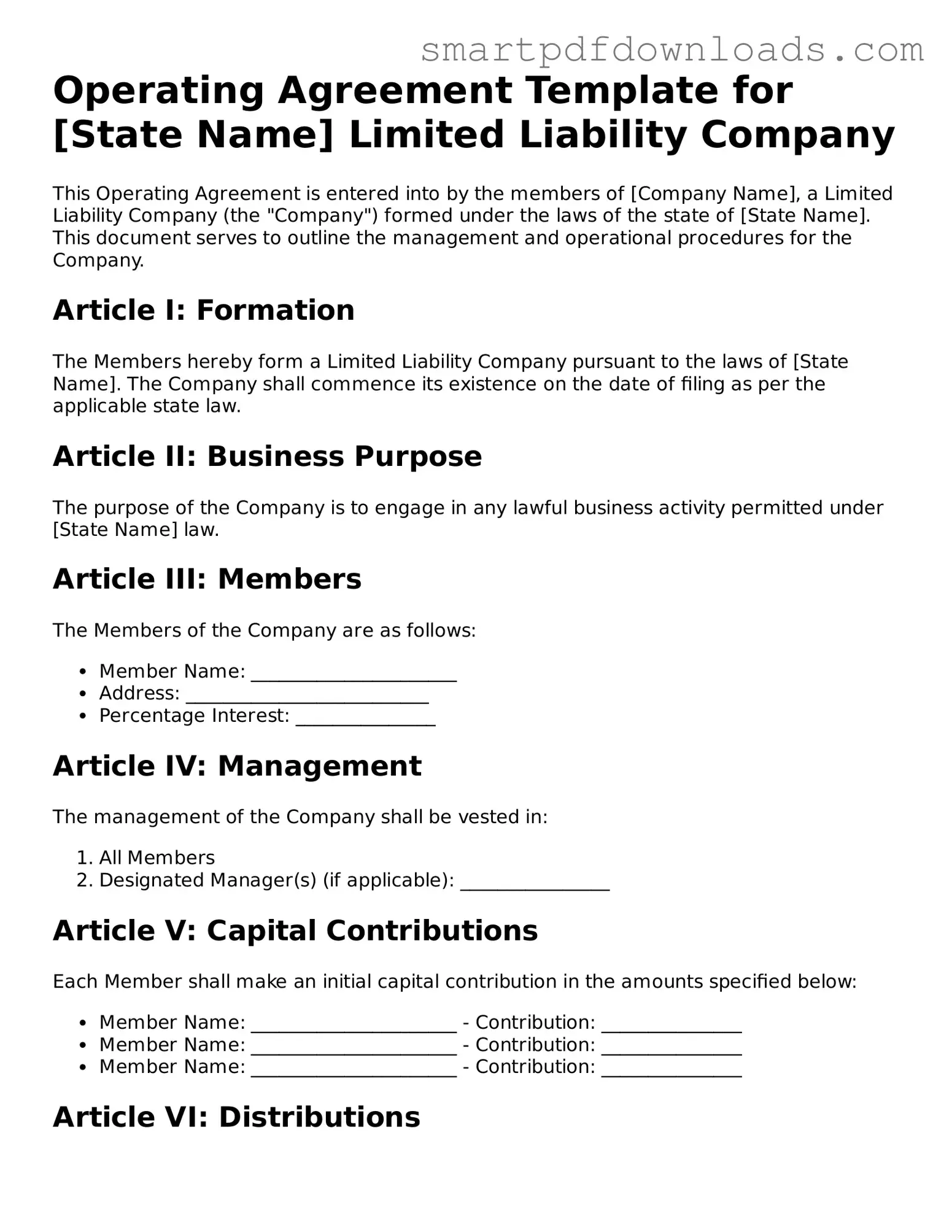Operating Agreement Template for [State Name] Limited Liability Company
This Operating Agreement is entered into by the members of [Company Name], a Limited Liability Company (the "Company") formed under the laws of the state of [State Name]. This document serves to outline the management and operational procedures for the Company.
Article I: Formation
The Members hereby form a Limited Liability Company pursuant to the laws of [State Name]. The Company shall commence its existence on the date of filing as per the applicable state law.
Article II: Business Purpose
The purpose of the Company is to engage in any lawful business activity permitted under [State Name] law.
Article III: Members
The Members of the Company are as follows:
- Member Name: ______________________
- Address: __________________________
- Percentage Interest: _______________
Article IV: Management
The management of the Company shall be vested in:
- All Members
- Designated Manager(s) (if applicable): ________________
Article V: Capital Contributions
Each Member shall make an initial capital contribution in the amounts specified below:
- Member Name: ______________________ - Contribution: _______________
- Member Name: ______________________ - Contribution: _______________
- Member Name: ______________________ - Contribution: _______________
Article VI: Distributions
Distribution of profits and losses shall be allocated to the Members in proportion to their percentage interests in the Company, unless otherwise agreed upon.
Article VII: Meetings
Meetings of the Members may be held at a time and place agreed upon by the Members. Notice of the meetings shall be provided to all Members at least [number] days in advance.
Article VIII: Amendments
This Operating Agreement may be amended only by a written agreement signed by all Members.
Article IX: Governing Law
This Agreement shall be governed by and construed in accordance with the laws of [State Name].
IN WITNESS WHEREOF, the undersigned Members have executed this Operating Agreement as of the _____ day of ______________, 20__.
Signatures:
- ___________________________ (Member Name)
- ___________________________ (Member Name)
- ___________________________ (Member Name)
